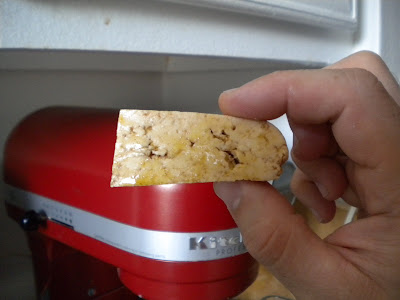
Very spicy pickled vegetable it is, alas, kimchi it is not. While this tasty marinade can be reused for pork, chicken, beef, or anything meant for the grill, it is nowhere close to traditional Korean kimchi. Oh, let me count the ways.
First of all, the savoy cabbage never properly wilted to the right texture. This batch was started over the winter and the leaves are still crunchily raw. Letting it sit for 2 hours does zilch to a sturdy variety like the savoy. Secondly, and probably the most glaring, kimchi does not use soy sauce. I seriously paused when looking at the recipe, but fought my reputation as a recipe tweaker and followed the direction for 1/4 cup soy sauce. Thirdly, the sugar made this concoction way too sweet. The resulting taste of soy and sugar would be a tasty marinade for any grilled meats, but is nowhere in the realm of kimchi. Finally, whatever this should have tasted like, 2 pounds of caggabe is a heck of a lot for a measly 1/4 cup garlic to infiltrate.
8 months later, I find this interesting condiment still sitting on my fridge door. Maybe I can cuisinart what remains and convice people this is an asian-inspired cole-slaw? So what would I do differently next time? Start with chinese napa cabbage, lose the soy sauce, make a salt brine, increase red pepper and garlic. The color should be like the cheery fiery jars looking up at you in the Korean delis. And most importantly, it needs to sit out at least overnight to start the fermentation process.





















 after rising
after rising


